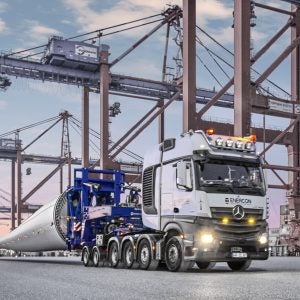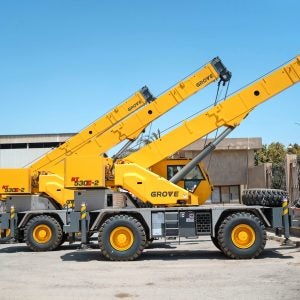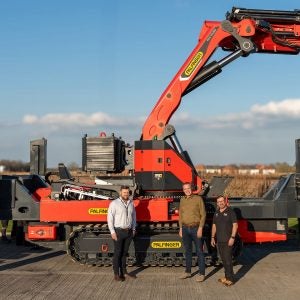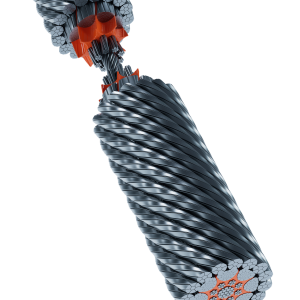The vessel takes a unique approach to lifting these giant loads. Rather than using pairs of cranes to lift topsides from a jacket or quay onto a transport vessel, the entire U-shaped craft is ballasted down, and moved below the load. Close to the load, it manouvers precisely using its own thrusters; over larger distances it is pulled by tugs.
A pair of hydraulically operated lifting frames on either arm of the craft are then moved out, and the vessel raised to lift the load away from the jacket. The lifting frames are equipped with interface absorption devices; these, in conjunction with the specially-designed flushing tanks, mean that the lifter does not need to use complex heave compensation systems.
The heavy lifter can use the lifting frames to raise and lower topsides weighing up to 15,000t. It can also use strand jacks, fitted on the arms of the vessel, to lower jackets weighing up to 25,000t.
MPU recently began, pouring the first of the lightweight concrete that will form the basis of the heavy lifter. The concrete used weighs only 2/3 of normal concrete. This stage of fabrication is taking place at the Keppel Verolme yard in Rotterdam.
Conceptual development of the vessel was undertaken in 1996–98, by engineers Dr.techn.Olav Olsen a.s. The concept was presented to Philips Petroleum Company of Norway and Conoco, from the Netherlands, in 1997. MPU was founded in 1997, with support from the Norwegian government, Conoco and Elf. Since then, the company has been testing the concept, refining the design and, in 2000, the design was studied by DNV.
The MLU Heavy Lifter MLU HL Preparing to pour concrete at the fabrication yard Concrete MLU HL 1 MLU HL 2 MLU HL 3






